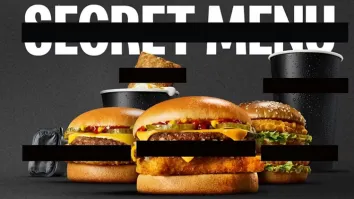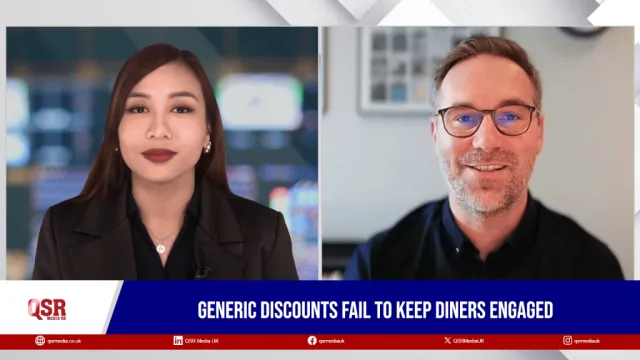
The key trends and changes QSRs need to keep in mind to dish out a post-pandemic customer experience
Worldline’s Lee Jones provides insights on evaluating a brand’s digital transformation strategy, responding to consumer behaviour changes and loyalty trends.
Offering a post-pandemic customer experience may likely mean offering customers the freedom to choose how they want to interact with your quick-serve or fast casual restaurant brand, suggests Lee Jones, Managing Director for Northern Europe, GSV at Worldline.
In a post-COVID world, how can chains implement its digital strategies in a profitable way whilst being mindful of the changes in consumer behaviour? Find out in this comprehensive Q&A with Jones.
(Editor’s Note: This interview has been lightly edited for clarity.)
QSR Media: What are some key questions brands need to ask when evaluating their digital transformation/adaptation strategy?
Jones: Flexibility is key. We have seen that it is possible for the entire retail environment to change overnight, and, to some extent, how willing consumers are to change with it.
Brands need to ask themselves: How do we want to be served in the medium to long term – how do we build a channel model that sees our different sales avenues complement and not compete with one another?
How can QSRs implement the transformations you mentioned earlier in a profitable way?
Although some QSRs will be deploying touchscreen kiosks to support their digital transformation, for many the changes needed will be as simple as printing signs to give customers a QR code access point and the software to back it all up.
There are also solutions that use apps, online services, the customer’s own device or supplied devices, such as tablet-based menus on tables. The emphasis has to be placed on making a journey ‘join up’ to create a frictionless experience that is constituent and reliable regardless of which channel is being used. This is because the ‘mechanics’ of digital transformation are, as the name suggests, digital, they can be changed and updated far more easily than physical architecture or changes to staffing and or their training.
Could you give your perspective on how consumer behaviour has changed over the past 12 months? (e.g. how have customer orders changed, how have customer expectations changed, how has interaction with your brand changed)
We have of course seen that QSR sales are down during the pandemic. But things are far better than we might have expected: a huge number of customers have adapted to contactless ordering in stores and ordering online.
Almost every QSR outlet and many pubs and restaurants have some kind of digital technology that would have previously only been available to those affiliated to major QSR brands, and then only in a small number of restaurants. Additionally, I think we’ll continue to see use of systems such as click and collect and newer systems like scan and pay.
How have you responded to these changes?
In short, we have provided the technology to make it all happen while ensuring it is always available - important in helping QSRs remain in business and trading. Our omnichannel solution is designed to enable customers to pay in their preferred payment method, whether they are paying at their table through QR codes or ordering online.
We have also introduced a range of next-generation features, like digital loyalty points collection and redemption and even facial recognition technology for payments of the kind that you would see in emerging self-service shops and restaurants.
Which changes do you think are permanent and which will go back to how they were before the pandemic?
The rule of thumb is that if an innovation reduces the ‘friction’ inherent in ordering and paying for food in QSRs then we can expect it to stay. Contactless payments were a large part of payments in Europe before the pandemic and we expect them to grow. We can also expect digital loyalty schemes like that in Nando’s to continue, and to be adopted by more QSRs.
In light of all these changes what do you think the future holds for the QSR and fast casual sector? (e.g. customer interactions, store formats, store locations, barriers to entry, etc.)
While it is certainly possible that there might be a reaction against impersonal digital systems, with QSRs stressing friendliness and face-to-face interaction once such things are hygienically possible, I think that it is more likely that we will see hybrid models in which customers can choose the level of interaction that is right for them, with some purely digital self-serve outlets in places like airports, train stations and shopping malls.
Because of this, it is going to be crucial that customers have the ability to start a transaction in one channel and finish it in another.
Talk us through changes that you’re seeing with your customers during this period.
We have seen amazing uptake in interest in bringing digital technology into QSR environments. Our clients in this sector are taking a long term view instead of just trying to adapt to the conditions as they are currently. They know that customers will have experienced the convenience of digital forms of ordering and a large percentage of them will want that level of convenience to continue.
Based on your experiences working with innovative brands, what opportunities do you think chains can further explore?
If they haven’t integrated loyalty programmes yet, then this is something that could be done quickly and simply with existing technology. We are also seeing interest in scan and pay and other technologies that will create radically different experiences and create significant new opportunities for businesses.
What’s your advice when it comes to selecting a payment service provider (PSP)?
Payments play a key part in what I define as ‘the moment of truth’ in retail. This is arguably the most sensitive part of the customer experience, so ensuring that merchants don’t invest in the cheapest provider but in the right payments partner is key if a reliable service is to be delivered.
We would urge QSRs to look for flexibility and a PSP who has an eye on the future. Change is inevitable, and when services like biometric payments, which Worldline has extensive experience in, become commonplace you do not want to be left behind. Beyond that, the requirements are the same as any partner in your business: responsiveness, alignment with your business objectives and a willingness to go the extra mile.
Lastly, it is important to remember that you will likely be in a long-term business relationship with your PSP, so think about the long term, not just the conditions during COVID.
Can you comment on changes to customer loyalty over the past 12 months?
We have seen that consumers are still loyal to brands even if they cannot physically visit stores – people will now get deliveries from places like Starbucks, McDonalds and Greggs when previously ‘ordering takeout’ would be reserved for more prestigious restaurants or specialist takeaways.
This speaks to the loyalty that these brands have built up and says positive things about how they will be able to build their cash reserves back up after a difficult year and a half, particularly when they have digitally transformed their payments.
What is food price inflation likely to do to QSR pricing over the coming year?
If it rises then the challenge is to work smarter and do things more efficiently. It will also be important to continue investing in all channels so that the experience continues to evolve positively and to avoid being left behind by the competition.
Clearly if costs rise then this somehow needs to be addressed, but by doing more digitally opportunities to reduce costs can be leveraged. – Using channels to upsell to drive increased profit and revenue will also be high on the agenda for most QSR businesses. But to make this happen the offer needs to be right, the product spot on and the way the customer is interacted with spot on.


























